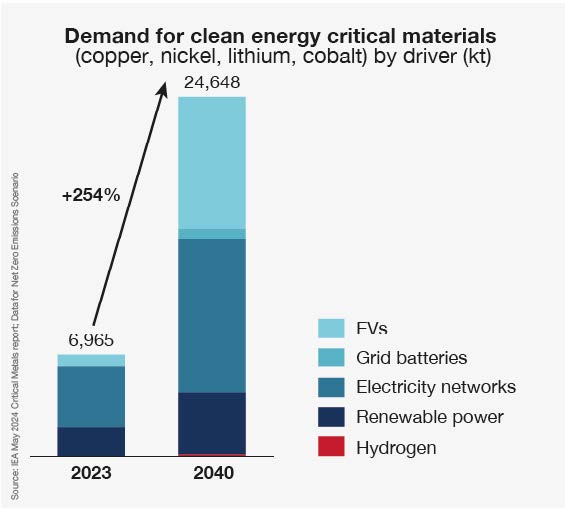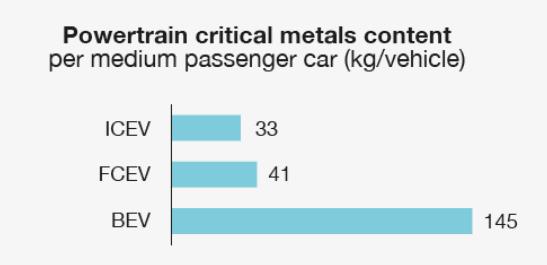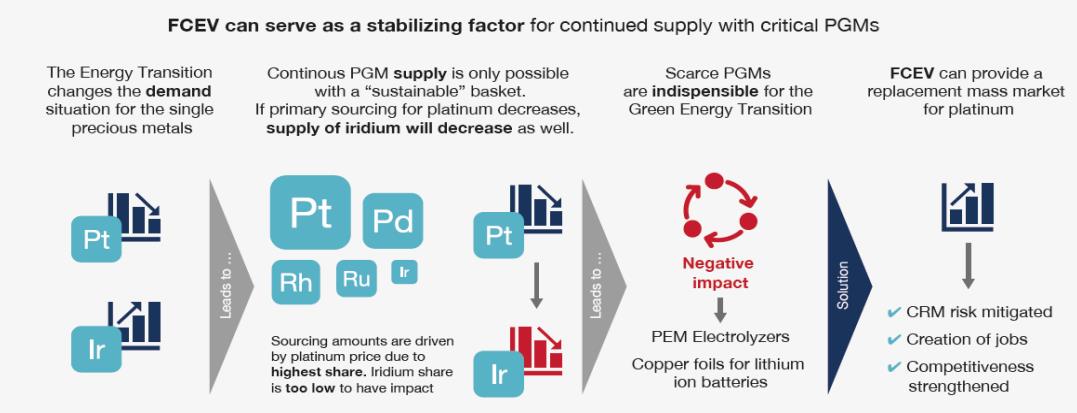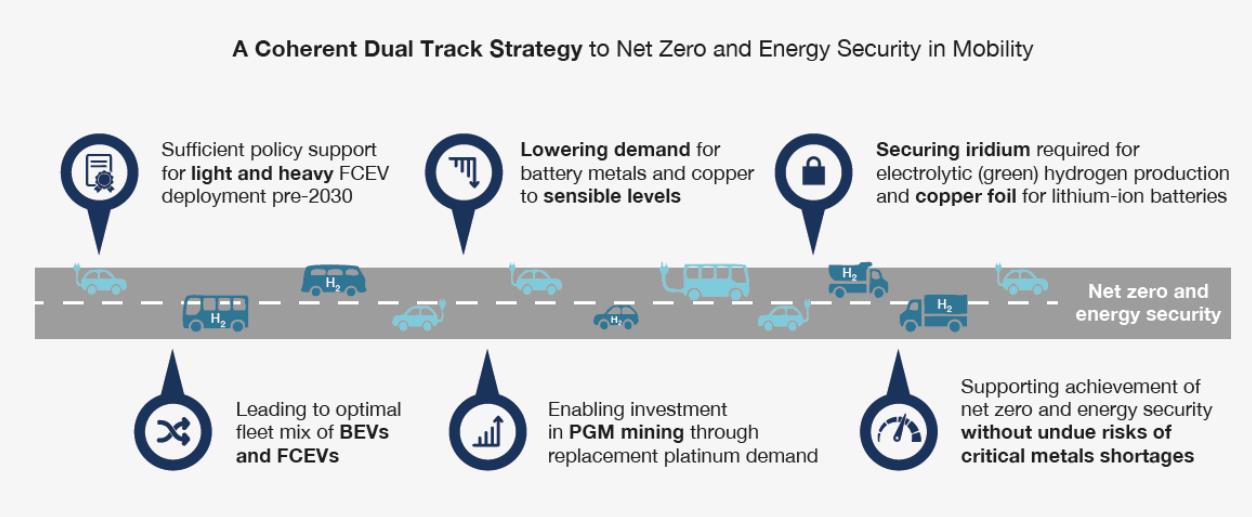Fuel cell vehicles to boost European competitiveness and the Green Deal
A collaborative paper prepared by Heraeus Precious Metals, Johnson Matthey and Anglo American, and published by the IPA
28 October 2024
The PGM industry is calling for an accelerated rollout of fuel cell vehicles in Europe to complement existing climate strategy while unlocking greater industrial competitiveness and security of critical raw materials supply.
How fuel cell technology supports Europe's goals:
Hydrogen mobility augments the zero-emissions fleet
The combination of hydrogen mobility with battery vehicles allows overall better use of energy resources, reduced load on the electricity grid, and more cost-effective transport decarbonisation.
Fuel cells, for light- and heavy-duty vehicles, help to reduce critical materials supply gaps
Significant fuel cell use in zero-emission vehicle fleets will lower the overall critical raw materials requirement: fuel cells enable a dramatic reduction in the vehicle battery size. Additionally, hydrogen infrastructure will complement electric recharging infrastructure with lower copper intensity.


A combination of battery vehicles and fuel cell electric vehicles (FCEVs) allows overall better use of finite resources. Battery vehicles enable energy efficiency, while fuel cell electric vehicles reduce overall critical metal requirements. Sources: IEA/FVV Study/Johnson Matthey
They capitalise on existing technology and supply chain advantages
Technology development for fuel cell electric vehicles (FCEVs) has been underway in Europe for decades and only needs to be scaled up. Lacking this support, Europe’s manufacturers and supply chains may struggle to compete from 2030 onwards with Asian manufacturers who have caught up.
FCEVs make the case for investment in platinum group metals supply

The largest market for platinum today is catalytic converters on internal combustion vehicles. By providing a replacement mass-market for platinum, FCEVs will secure PGM mining investment, ensuring continued supply of the critical by-product iridium.
What can policymakers do?
To achieve net zero targets without being derailed by critical material shortages, active political support for the ramp up of FCEV deployments in both the light and heavy vehicle markets before 2030 is necessary:
1. Unlock commercial-scale deployments across Europe
To allow market participants to opt for FCEVs if desired, FCEVs must be competitive. But they have not yet achieved equivalent economies of scale to battery vehicles. More generous subsidies for FCEV producers and sales are currently necessary. Selected fleet deployments across Europe, whether passenger cars (e.g. taxis or local government fleets), light commercial vehicles, buses or trucks, will act to bring down FCEV costs and create offtake for clean hydrogen producers.
2. Seed hydrogen infrastructure
The regulation on Alternative Fuel Infrastructure (AFIR) target for 600 hydrogen refuelling stations by 2030 must be attained as fast as possible, with urban nodes and corridors that support the targeted fleet deployments to be prioritized in the rollout.
3. Help bridge the cost gap
There is a gap between the price of clean hydrogen production at present and the cost at which it becomes convenient for the transport needs of citizens and industry. National authorities should consider bridging that cost gap until the market becomes self-sustaining, as more vehicles on the market will in turn spur the deployment of hydrogen production capacity.
The time to act is now.
A mass-market for FCEVs in Europe before 2030 will capitalise on existing European strength in platinum group metals processing and recycling and cement European innovation in PGM technology. It will strengthen domestic automotive and clean hydrogen supply chains. It will help to secure cost-effective clean hydrogen to decarbonise hard-to-abate sectors, such as heavy industry and aviation.
Our recommendation: Implement a dual-track strategy for mobility in Europe to balance demand for critical materials and support overall uptake of zero-emission vehicles.

FCEVs are enabled by platinum catalysts, while proton exchange membrane (PEM) electrolysers to make clean hydrogen require iridium and platinum. Copper foils for lithium-ion batteries are produced via electrodeposition using an iridium anode.

